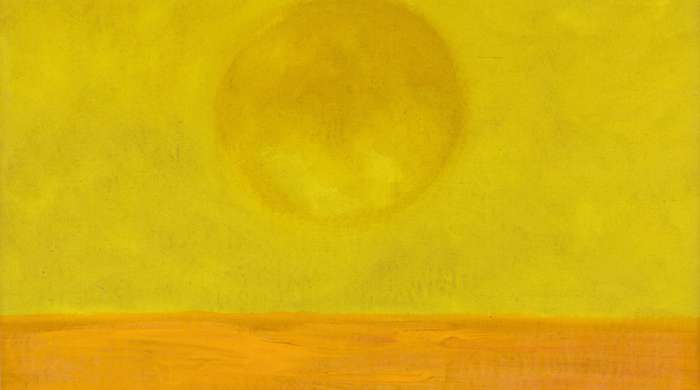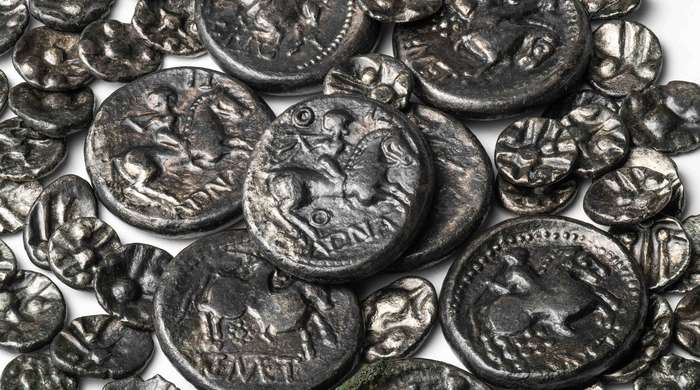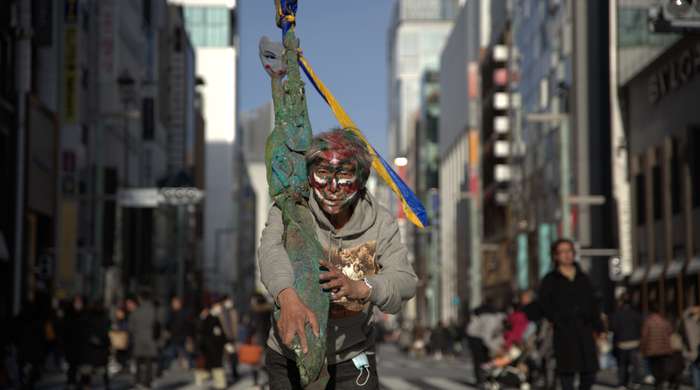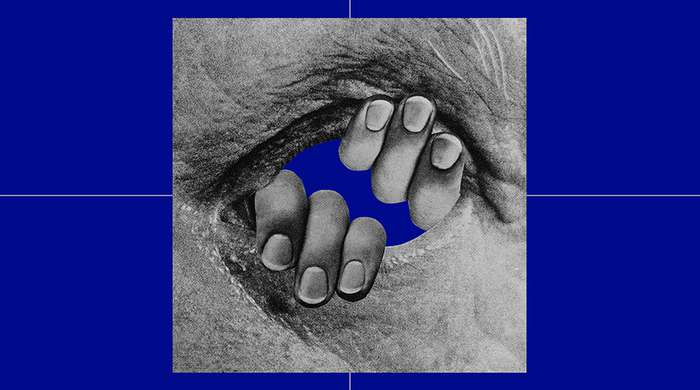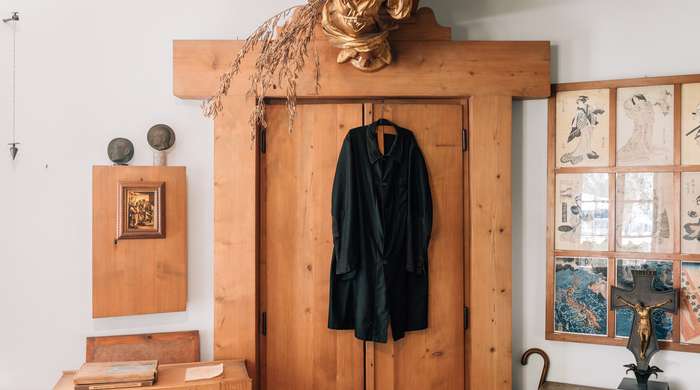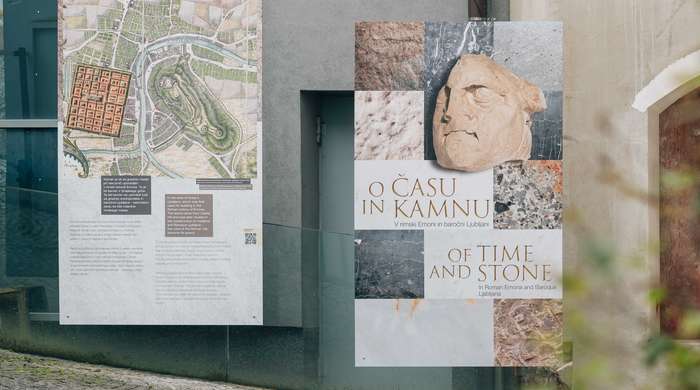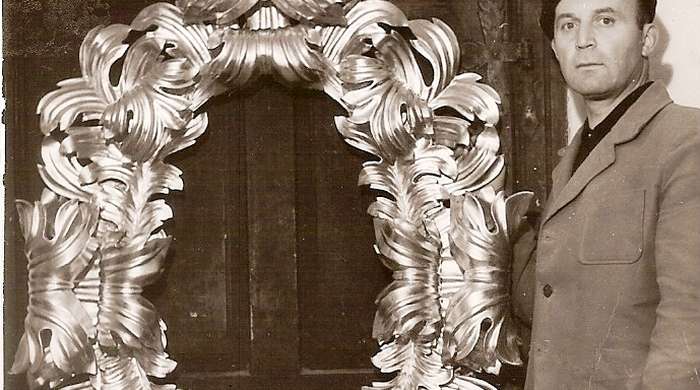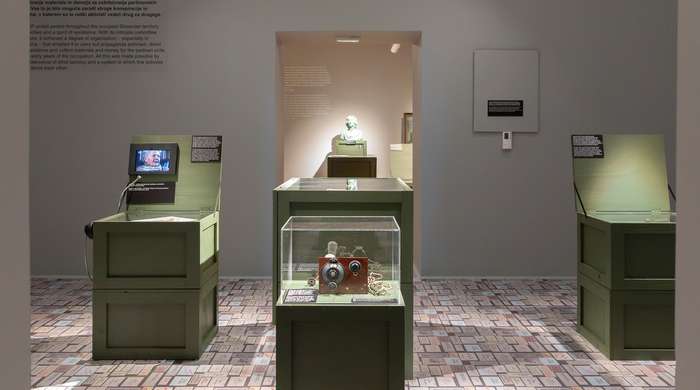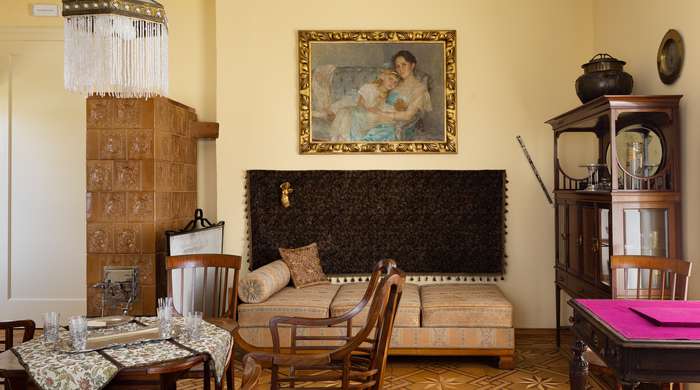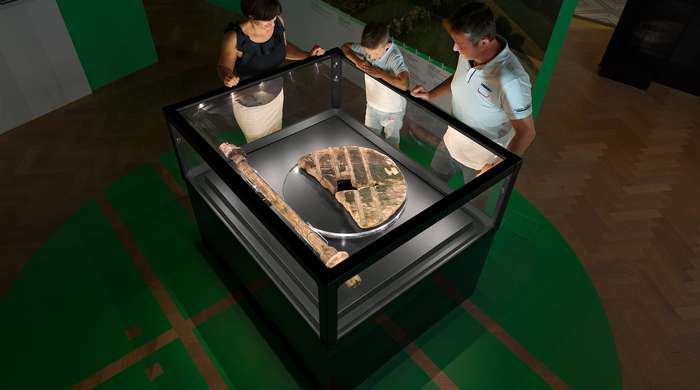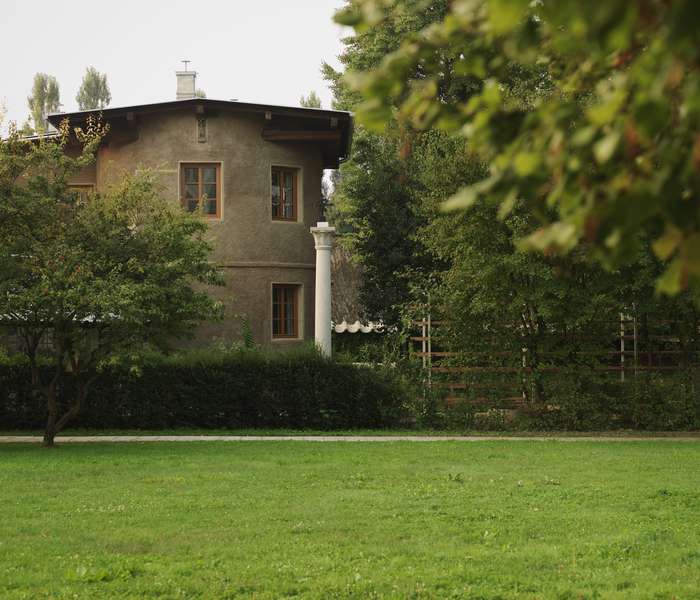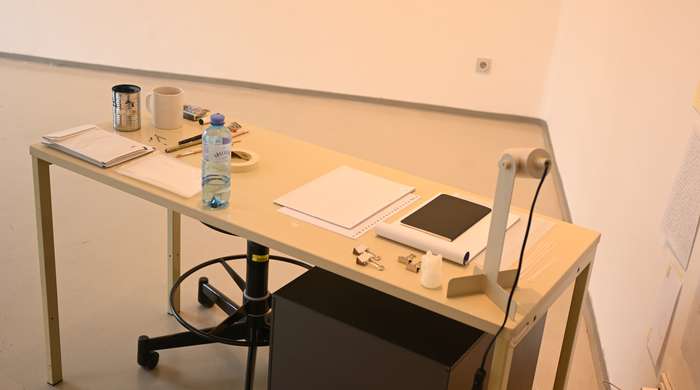Exhibitions
In the exhibition Temporary Address, we present 17 authors selected through the participants of the Up Close: Photography as a Way of Seeing study group. Their projects are imbued with feelings of closeness and familiarity, vulnerability and change, as well as an awareness of their own transience. They recreate ambients and question the meaning of the various spaces we inhabit.
A memorial exhibition that honours one of Slovenia's key painters – a philosopher and member of the OHO group. The drawings and monumental canvases executed in acrylic on jute reflect his extraordinary artistic path characterised by red and blue motifs.
In Roman mythology, the destiny of both humans and gods was in the hands of three women known as the Parcae: Nona spun the thread of an individual’s fate, Decima measured it, and Morta ultimately cut it. In accordance with this tradition, possible interpretations are presented below of the life and death of a person from a burial pit uncovered during archaeological investigations conducted in the area of the planned extension of the Janez Levec Centre in Prule between April and November 2025.
The retrospective Art Is Always the Next Possibility presents seven decades of artistic oeuvre of the renowned artist Yoshio Nakajima. He was one of the first working in the field of performance and happenings from the legendary Tokyo avant-garde scene of the 1960s and was strongly influenced by the Fluxus movement. Nakajima's oeuvre expresses faith in the individual and in humanity.
Stane Jagodič is one of Slovenia's most prominent contemporary visual artists in the domain of socially engaged art. The exhibition presents his rich creative path since the 1970s, highlighting the synthesis of his experimental approaches within the expanded fields of photography, drawing and printmaking, where his characteristic concerns with ecology, social justice, solidarity, anti-militarism, technological progress and the search for balance between them are expressed with particular clarity.
With selected photo documents and objects, the exhibition will bring to life the time when the whole world came to life in Ljubljana with cartoons, commercials and film.
As part of this year’s project, inspired by Plečnik’s legacy and intertwined with contemporary art, we have invited the renowned Mexican artist Iñaki Bonillas and the internationally engaged Slovenian curator Tevž Logar to collaborate. The central theme of Bonillas’s intervention and exhibition is memory and its architectural reconstruction, through which we resist forgetting.
The study of stones from the periods of ancient art and architecture and the Baroque.
After its successful presentation at the Plečnik House, the exhibition 'Master Woodcarver Maks Bergant and Plečnik: The Charm of Wood' moved to Kamnik – the town where Bergant spent most of his creative life. Its display at the Inter-municipal Museum Kamnik at Zaprice Castle is both a tribute to a local artist and an opportunity for visitors to discover a valuable heritage that was born in Kamnik yet transcended local boundaries.
The exhibition, which marks the 80th anniversary of the end of World War II, presents the key events that took place in Ljubljana during the occupation. It highlights the everyday lives of residents during the war, their personal choices, the violence of the occupiers, and the organized resistance. Through individual stories, it reveals the difficult dilemmas people faced in the most challenging times and encourages visitors to reflect on peace, war, and the culture of nonviolence – themes that remain relevant to this day.
Listen to the story of Ljubljana Mayor Ivan Hribar in Villa Zlatica.
How well do you know the rich history of Slovenian capital? Pile-dwellers, Emona, Middle and New Ages, the 20th and 21st centuries… what is the history of Ljubljana? Get to know Ljubljana's past - see the chronological presentation of Ljubljana’s millennia of heritage with precious authentic artefacts, like the world's oldest wooden wheel with an axle!
“A tower, a mule, me and the garden” – that is how Jože Plečnik imagined his life when he didn’t know yet that after Vienna and Prague his native Ljubljana would be his lifetime’s environment for his creative work.
An interdisciplinary artist recognised for her use of modern media and technology presents a carefully conceived project installation. Exploring new forms of expression, she focuses on designing objects that are often integrated into site-specific spatial compositions.

